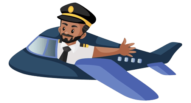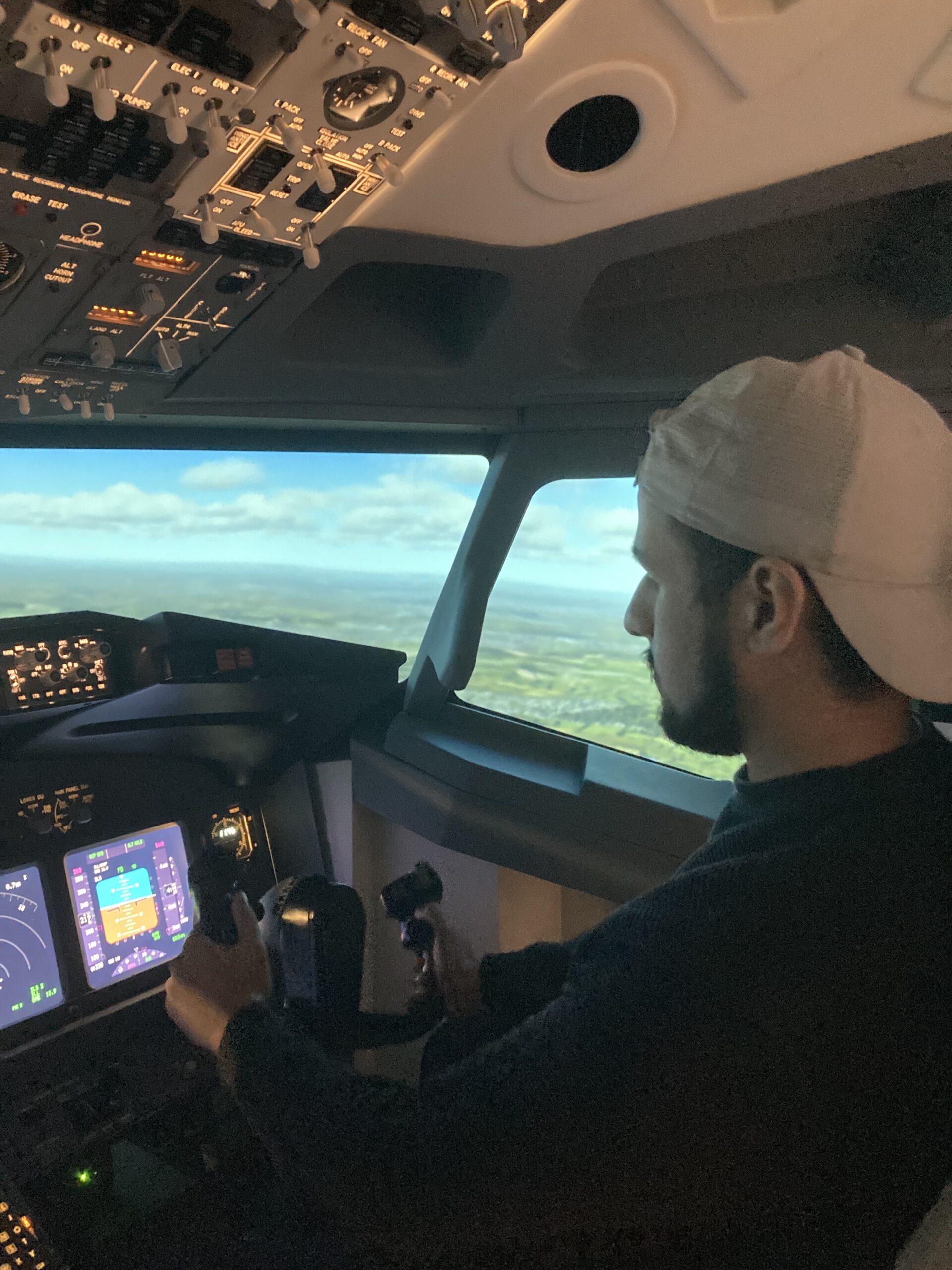
Blue Skies And Contrails: Flying A B-737 Flight Simulator at FlightPad.
B737 flight simulator – My experience
Recently I visited Flight Pad for a session on their Boeing 737 fixed Flight Simulator. In this blog I will explain my experience, insights and what I learnt. Enjoy!
This was my first time using Flight Pad’s state-of-the-art flight sim. Flight Pad is based in West London at the University of West London – they also recently hosted a networking event for pilots that I attended. If anyone wants to check out my blog on the networking event – click here.
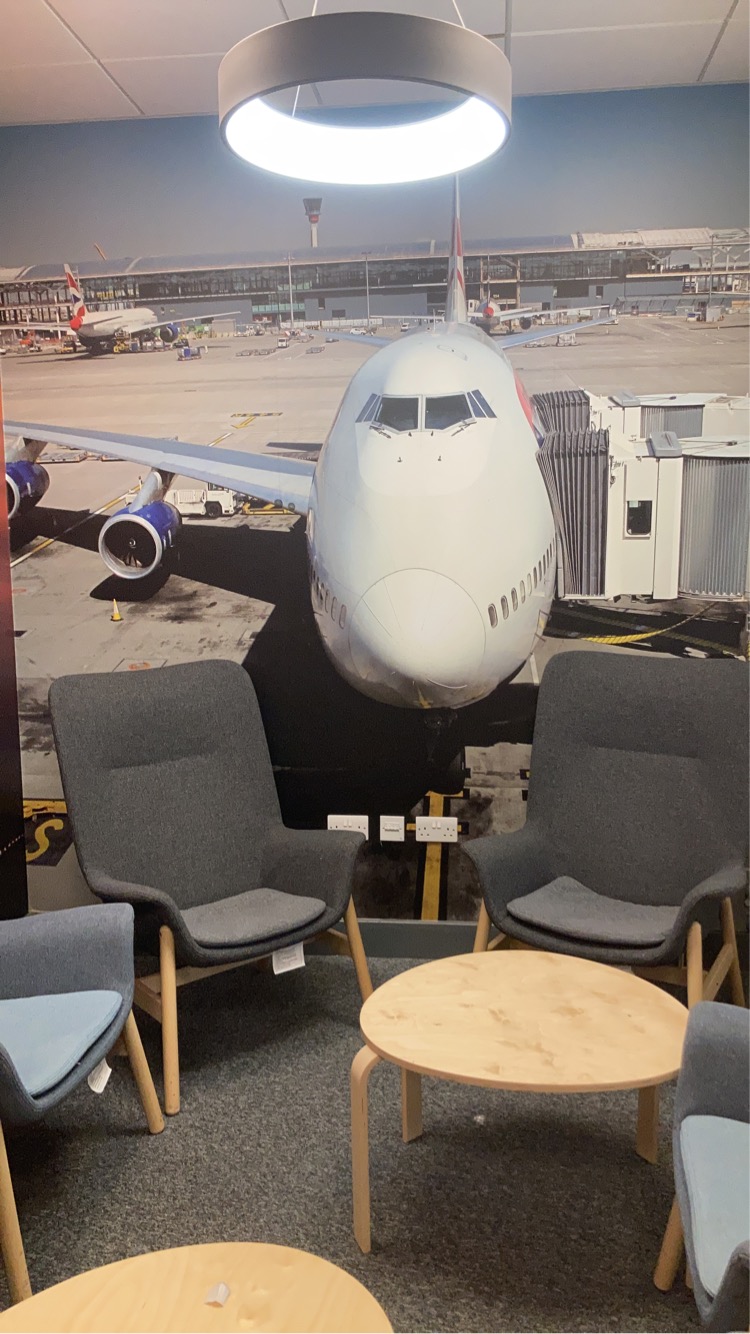

The experience started with the pre-flight briefing. Firstly, this included selecting the airport and flight intentions. Next, we went over the controls – most of which was self-explanatory. For example, the control column, rudders, thrust levers, flaps and brake release. We also went through the B737 main panel – such as the auto-pilot (heading, altitude, vertical speed), primary flight displays, auto-brake selector, gear positions and a few other important switches.
The simulator instructor created a mock-up weather briefing which gave me a heads up of what to expect. I chose London Heathrow Airport (LHR) as the departing airport. I took over controls to taxi and line up to 27R – one aspect I noticed was how stiff the control column was and how much pressure it needed to move. Apparently it’s the same in real life – so for those that are used to home flight sims, it’s a totally different feel!
One thing I did notice during the take-off run was that as the speed built up over the virtual ‘wings’ less pressure was needed on the rudder and control column to keep the plane straight – just as described in the PPL books. I reached the take-off decision speed and moments later the rotation speed. Eventually I was up and my helpful instructor put the gears up. I have to say it felt incredibly real – especially with the wrap around screens which almost makes you feel like you’re in the cockpit. I can only imagine what it would’ve been like if I was experiencing the non-fixed simulators!
Moments after, take-off flaps were retracted and an after take-off check was carried out. I have to point out resisting the urge to focus on the panel displays is incredibly important. From pilots I have spoken with and articles I have read – it’s important to ensure your eyes are always looking out afield and momentarily looking at the displays. When I say momentarily I mean a quick glance. I thought that was an important takeaway as it’s really easy to fixate on what the displays are saying – and you lose situational awareness of what is around you. Before you know it you’ve either infringed airspace rules (i.e. entered a restricted zone) or have come in close proximity to another aircraft.
Another important take-away for me was the ability to multi-task. You see when we first learn to drive – our focus is on what our legs are doing (i.e. the brakes, clutch and accelerator), what our arm is doing (i.e. shifting gears) and what’s happening outside. All of the time we are doing all three at once. The first lesson is always the worst – you’ve either stalled the car or you’ve started to move again whilst still on the third gear. Overtime you learn and adapt – your movements and controls on the pedals work in sync with your gear change and your outside view remains uncompromised from distraction. You keep all eyes on the road and take a quick glance at your dashboard every now and again (checking your speed- 30mph in residential areas!). After a few lessons this becomes second nature. After a few years you’re doing all of that with a drink between your lap and on a hands-free call! It’s amazing how quickly we adapt to driving a car. It’s the same concept with flying a plane. There are many things you need to be doing all at once – whether this is applying rudder pressure and banking in a turn or trimming the aircraft in a fixed-speed climb. Or completing an after take-off check whilst flying the plane. As a pilot you’re constantly multi-tasking and with time and experience it feels like nothing. Having experience on the flight sim really made me appreciate the importance of multi-tasking.
When flying the Cessna we are encouraged to cut off power early and then float along the runway before a smooth touchdown. Cessna’s are incredibly light and ground effect helps retain lift just before touchdown. However, when it comes to the big 737s – it’s a totally different scenario. From my experience you want to keep just enough power applied that allows you to flare (far heavier than a Cessna – so power is essential) and then once the back wheels are down power is pulled all the way back. But again it was good being able to feel the control column and how I assumed them to be.
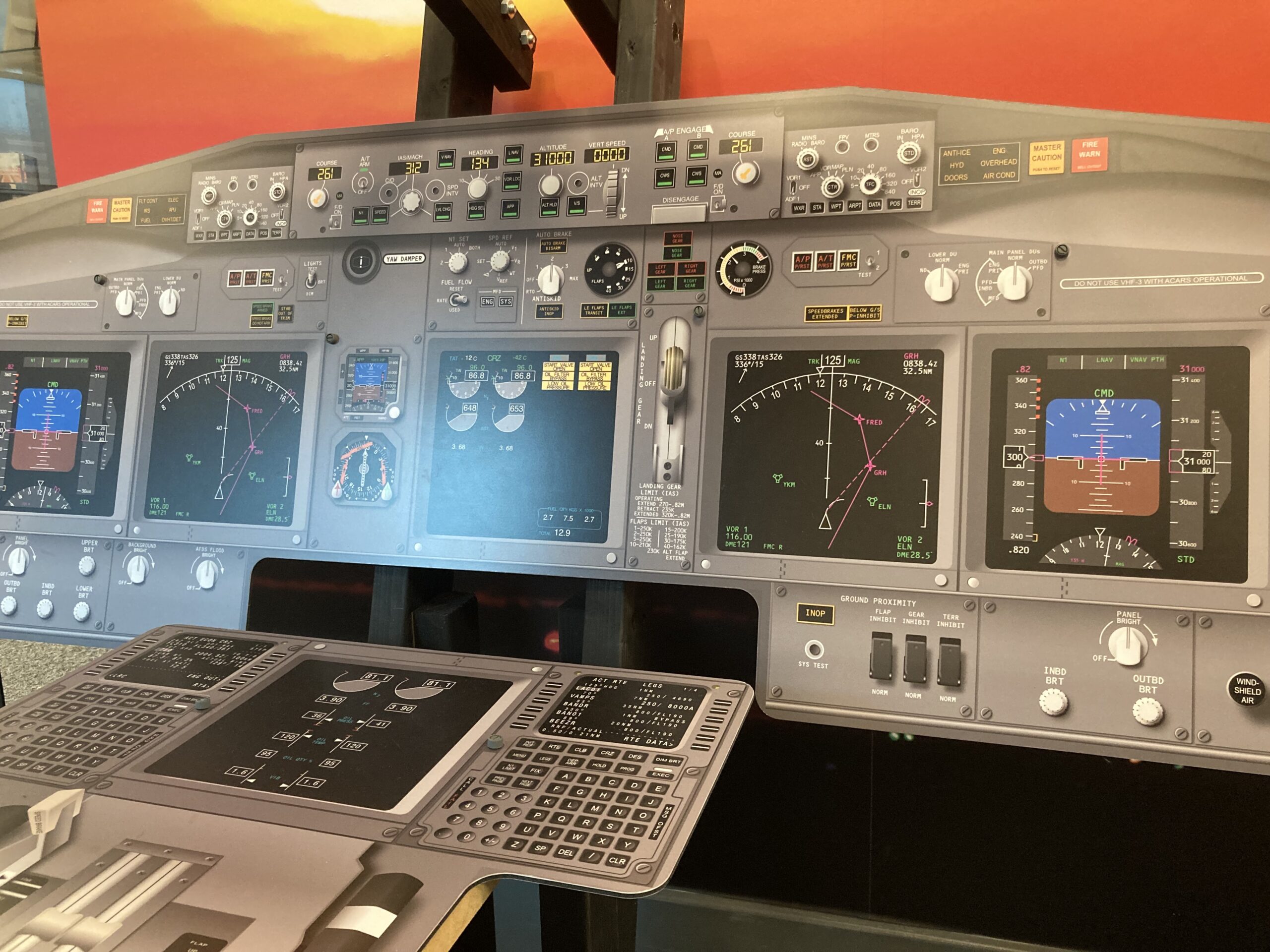
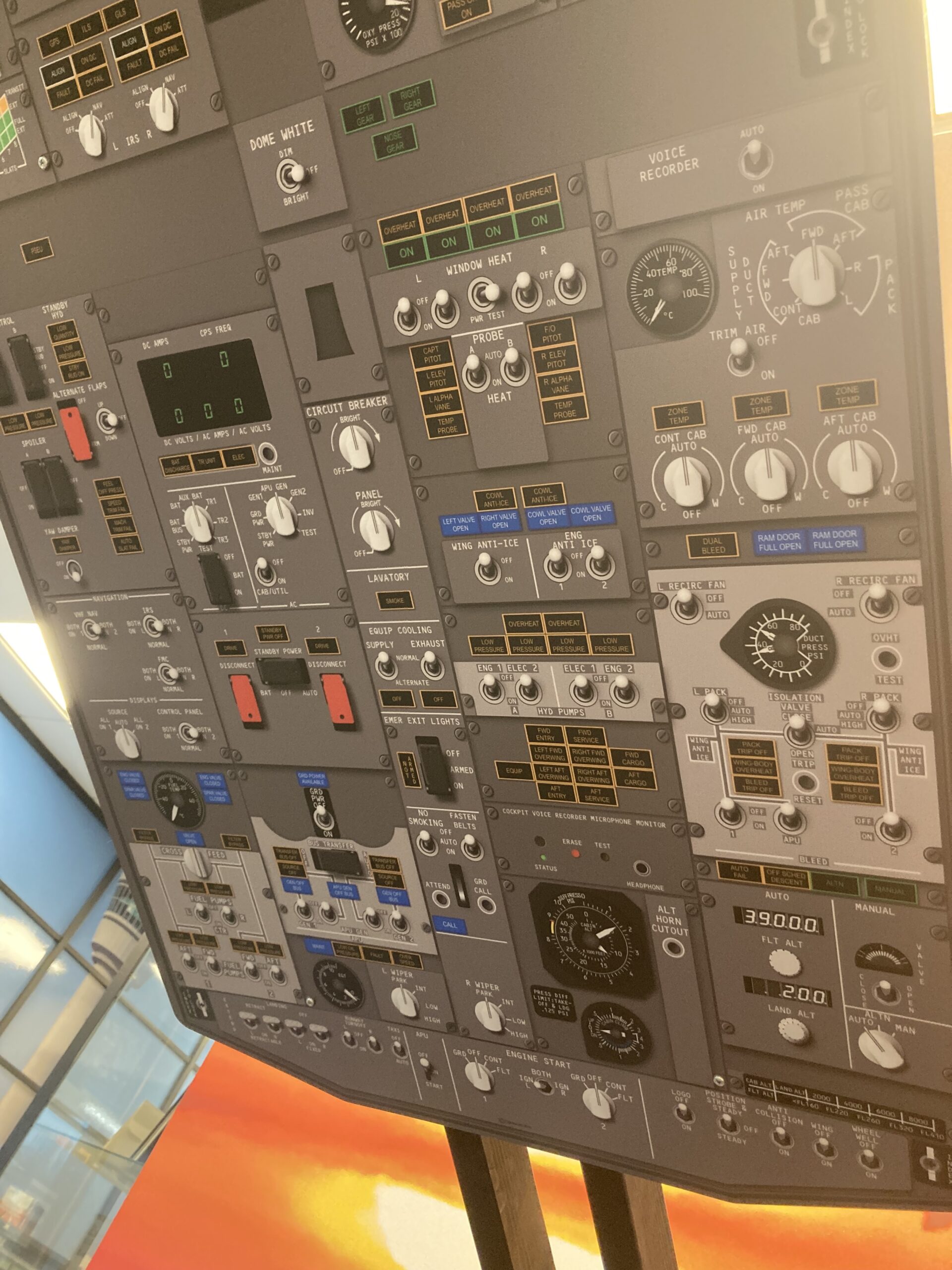
I must say their cardboard cockpit is also great! I had great fun sat in a chair looking at the make-shift cockpit – at one point I was tempted to take it apart and take it home with me. Shame it wouldn’t fit in my rucksack!
Are you 13-17? Aspiring Pilot Membership.
Flightpad offers an aspiring pilot membership for 13-17 years old. This starts from £18 and gives you access to their members-only events, aviation-specific activities, a complimentary flight and career development tips.
This wasn’t available for me when I was 13 to 17. If I was you I’d definitely take up this opportunity. What’s important is the networking opportunities available – you’ll get to know and work with pilots / pilots in training. You’ll get to know Flightpad as more than just a simulator company. And who knows they may even employ you to work with them after the age of 17… the secret is to make a strong impression and have free sim sessions as part of the contract clause. Getting yourself involved in aviation so young really does help. I wish I could’ve got involved in opportunities like these as a kid, but I couldn’t – but I’d definitely recommend any of you to do so.
For those that are interested to sign up – please click here which will redirect you to the Flightpad website.
What I learnt from this experience
First, I’m grateful to Flightpad and the amazing training instructors for this experience. Being able to fly is a luxury to me and I appreciate anything that helps me move one step closer to the cockpit. So what are the lessons I learnt in summary?
- Multi-tasking – as mentioning earlier multi-tasking forms a key part of what it means to be a pilot. Overtime you’ll become a master at your trade!
- Situational awareness – keep a lookout outside at all times with quick glances at the display panel.
- Leadership – as a pilot you lead-by-example. Once you’re in the cockpit take ownership of your safety and your passengers’ safety. Follow what you’ve learnt and apply them to flying. Remember, a pilot never stops learning! Improve on what you know and this will make you a better leader!
- Have fun – I always hear pilots say training is the best part of flying and they miss it! So throughout this process remember to enjoy yourself!
Happy flying.
